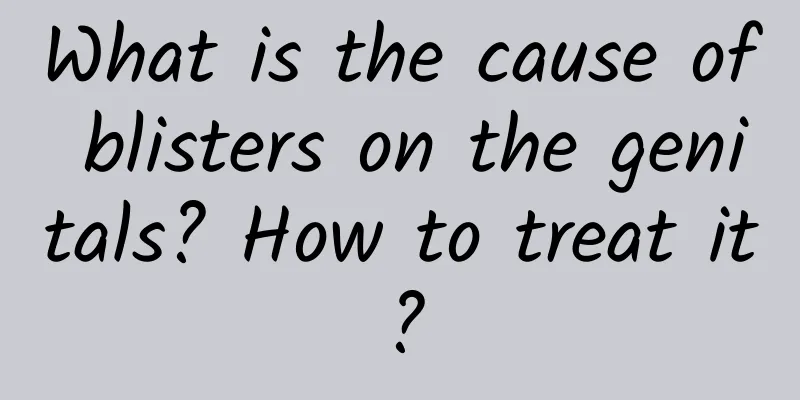What is the TCM diagnosis and treatment of chest pain?

|
Many friends are not very familiar with chest pain. Simply put, chest pain refers to a feeling of dull pain in the chest in people's lives, and breathing becomes very difficult after chest pain. Severe cases may also cause heart pain, so this disease is quite serious. So the question is, from the perspective of traditional Chinese medicine, what is the diagnosis and treatment of chest pain? Treat according to syndrome differentiation 1. Cardiac blood stasis syndrome (1) Symptoms Blood stasis, obstruction of chest yang and poor heart meridians lead to heart and chest pains, which are like being stabbed or twisted. The pain is localized and occurs at night. In severe cases, the heart pain radiates to the back, the back pain radiates to the heart, or the pain extends to the shoulders and back, accompanied by chest tightness. If it does not heal over time, it may be aggravated by anger or fatigue. The tongue is dark purple with ecchymosis, the tongue coating is thin, and the pulse is stringy and astringent. (2) The treatment principle is to promote blood circulation, remove blood stasis, dredge meridians and relieve pain. (3) The main prescription is Xuefu Zhuyu Decoction with modifications. (4) Prescriptions include Chuanxiong, peach kernel, safflower, red peony root, bupleurum, fructus aurantii, Achyranthes bidentata, angelica, and raw rehmannia. 2. Qi stagnation in the heart and chest (1) Symptoms The liver fails to release qi, qi stagnation and heart pulse disharmony leading to fullness and stuffiness in the chest, paroxysmal dull pain in a fixed location and occasional urge to sigh. The symptoms are easily induced or aggravated when emotional frustration occurs, or are accompanied by abdominal distension, thin or greasy tongue coating and a thin and stringy pulse. (2) The treatment principle is to soothe the liver and regulate qi, and activate blood circulation and dredge the meridians. (3) Main prescription: Chaihu Shugan San with modifications. (4) Prescriptions include Bupleurum, Citrus aurantium, Cyperus rotundus, Tangerine peel, Ligusticum chuanxiong, and Paeonia lactiflora. 3. Phlegm and turbidity obstruction syndrome (1) Symptoms Phlegm and turbidity are entrenched, chest yang is not developed, Qi is blocked, and blood vessels are blocked, resulting in heavy chest tightness and mild heart pain, excessive phlegm and shortness of breath, heavy limbs, and obesity. The symptoms are prone to occur or worsen on rainy days, accompanied by fatigue, poor appetite and loose stools, coughing up phlegm, an enlarged tongue with teeth marks on the edges, turbid and greasy or white and slippery tongue coating, and a slippery pulse. (2) The treatment principle is to promote yang, eliminate turbidity, clear phlegm and relieve numbness. (3) The main prescription is Gualou Xiebai Banxia decoction combined with Ditan decoction with modifications. (4) Prescriptions include Trichosanthes kirilowii, Allium macrostemon, Pinellia ternata, Arisaema consanguineum, Rhizoma Anemarrhenae, Ginseng, Poria, Acorus calamus, Tangerine peel, Citrus aurantium, etc. 4. Cold stagnation in the heart pulse syndrome (1) Symptoms Yang deficiency, stagnant Yin and cold, obstruction of Qi and blood, and weak heart yang are manifested by sudden heart pain, heart pain going through the back, shortness of breath and inability to lie flat. The disease is mostly caused or aggravated by sudden cold weather or sudden cold, accompanied by cold body, even cold hands and feet, no cold sweat, chest tightness and shortness of breath, palpitations, pale face, thin white tongue coating, and deep and tight or deep and fine pulse. (2) The therapeutic principle is to use pungent and warm herbs to dispel cold and promote the flow of heart yang. (3) The main prescription is Zhishi Xiebai Guizhi decoction combined with Danggui Sini decoction with modifications. (4) Prescriptions include cinnamon twig, asarum, allium macrostemon, trichosanthes root, angelica sinensis, liquorice, aurantium immaturum, and magnolia bark. 5. Qi and Yin deficiency syndrome (1) Symptoms Insufficient heart qi, depletion of yin blood, and stagnation of blood circulation lead to dull pain in the chest that comes and goes, palpitations and shortness of breath, which worsens with movement, accompanied by fatigue and weakness, low voice, pale face, easy sweating, crimson tongue, fat tongue with teeth marks on the edges, thin white fur, and weak, thready or intermittent pulse. (2) The treatment principle is to nourish qi and yin, and activate blood circulation and unclog the meridians. (3) The main prescription is Shengmai San combined with Ginseng Yangrong Decoction with modifications. (4) Prescriptions and medicinal materials include ginseng, astragalus, ophiopogon, schisandra, salvia miltiorrhiza, angelica, and polygonatum. 6. Heart and Kidney Yin Deficiency Syndrome (1) Symptoms Water cannot support fire, and internal heat burns the heart, causing the heart to lose nourishment and poor blood circulation, leading to heart pain, stuffiness, palpitations, night sweats, insomnia, soreness of the waist and knees, dizziness, tinnitus, dry mouth and constipation, red tongue with little moisture, thin or peeled tongue coating, and a thin and rapid or intermittent pulse. (2) The treatment principle is to nourish Yin, clear heat, nourish the heart and harmonize the meridians. (3) The main formula is Tianwang Buxin Dan combined with Zhigancao Tang with modifications. (4) Prescriptions and herbs include Radix Rehmanniae, Scrophulariae, Radix Ophiopogonis, Ginseng, Poria, Radix Glycyrrhizae, Fructus Platycladi, Schisandrae Chinensis, Polygala, Semen Ziziphi Spinosae, Salvia miltiorrhiza, Angelica sinensis, White Peony Root, and donkey-hide gelatin. 7. Heart and Kidney Yang Deficiency (1) Symptoms Deficiency of Yang Qi, weak chest Yang, obstruction of Qi movement, and stasis of blood lead to palpitations and pain, chest tightness and shortness of breath (especially worse when moving), spontaneous sweating, pale complexion, fatigue, coldness, cold or swollen limbs, pale and fat tongue with teeth marks on the edges, white or greasy tongue coating, and deep, thin and slow pulse. (2) The treatment principle is to warm and replenish Yang Qi and invigorate the heart Yang. (3) The main prescription is Shenfu Decoction and Yougui Drink with modifications. (4) Prescriptions and herbs include ginseng, aconite root, cinnamon bark, roasted licorice root, cornus officinalis, rehmannia root, epimedium, and psoralea corylifolia. |
<<: Psoralea corylifolia prescription for treating white spots
Recommend
Dense red spots on the back of the hand
If there are dense red spots on the back of your ...
What causes right eye twitching?
I believe that every one of my friends has experi...
Red and hot face
With the continuous improvement of modernization,...
What are the symptoms of HPV infection?
The symptoms of HPV infection include increased v...
How to treat varicocele
Many people have never heard of varicocele, or ev...
What are the signs of purpura recurrence?
Allergic purpura is a common disease, and its cha...
What Chinese medicine should I take for anxiety and insomnia?
In today's society, many people are anxious b...
What are the effects of Tianjiu?
Tianjiu therapy has a long history and is a tradi...
What is the cause of excessive earwax?
Most of the time we don’t pay attention to the re...
Hemorrhoids do not cause bleeding, only small lumps
After suffering from hemorrhoids, you should stre...
How to treat ankle periosteum injury
Ankle periosteum injury is generally caused by lo...
It is good to love taking a bath, but don't do it like this, it may hurt your body or even kill you.
Bathing is a cleaning task that we must do in our...
Giant urticaria
Urticaria is a skin disease with a very long incu...
Causes of recurrent oral ulcers
Nowadays people’s eating habits have become more ...
The dangers of high platelet count in infants
What are the dangers of high platelet count in in...









